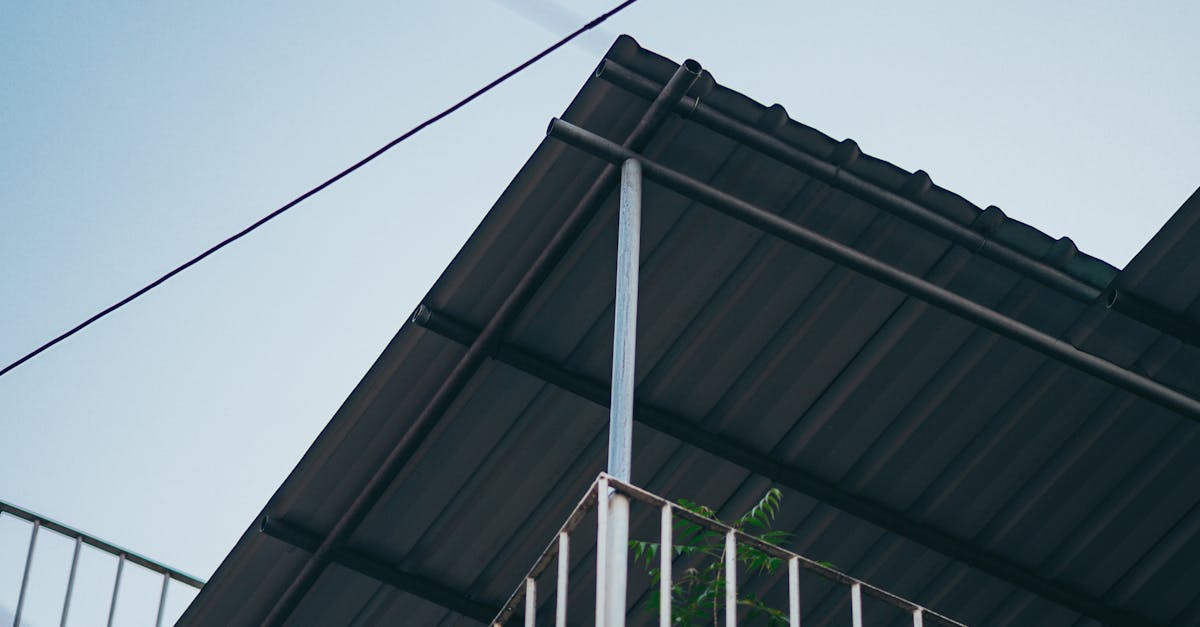Ceramic For Metal Roofing Replacement Australia

Table Of Contents
Ceramic For Metal Roofing Replacement Australia
As homeowners in Sydney look for durable and aesthetically pleasing roofing solutions, Insulated Metal Roofs Sydney have emerged as a popular choice. These roofs not only provide superior insulation but also offer a sleek and modern appearance that enhances the overall value of a home. With the unpredictable weather conditions in NSW, the incorporation of ceramic tiles to complement metal roofing can significantly improve energy efficiency and reduce maintenance costs over time.
The trend of integrating tile with insulated metal roofs sydney reflects a growing desire for innovation in roofing materials. This combination provides the advantages of both worlds—the durability and lightweight nature of metal along with the timeless elegance of ceramic. As Sydney's real estate market continues to evolve, understanding the benefits of this roofing substitution is essential for homeowners looking to make informed decisions on their property investments.
Advantages of Switching to Slate Roofing to Steel
Switching to slate roofing to metal brings several benefits for homeowners. One benefit is durability. Steel roofing are famed for their ability to withstand harsh weather conditions, such as heavy rain, snow, and strong winds. Such a strength translates into a longer lifespan compared to traditional slate options. Furthermore, metal roofs are lightweight, making installation easier and more cost-effective for homeowners.
Another advantage of changing to metal roofing is the efficiency of energy use. Aluminum roofing reflect sunlight, which can help decrease cooling costs during hot summers. This also contribute to lower energy bills, and they also promote a more comfortable indoor environment. Furthermore, many aluminum roofing options are designed to be environmentally friendly, creating a greener choice for homeowners looking to improve their home's efficiency.
Why Transitioning from Steel Roofing in Sydney
Transitioning from aluminum roofing represents a significant step for residents in Sydney. This kind of roofing provides improved longevity to withstand harsh weather conditions, which is important in the local climate. Moreover, aluminum roofs require less maintenance, conserving homeowners time and money throughout the years.
A further advantage of transitioning from aluminum roofing lies in its energy efficiency. Steel roofs reflect heat effectively, which can assist in lowering air conditioning costs during the hot summer months in Sydney. In addition, steel roofs are eco-friendly, often made from recycled materials and being fully recyclable at the end of their lifespan. This mix of benefits makes this option to upgrade to aluminum roofing a smart investment for residents in Sydney.
Typical Problems When Switching Ceramic Roofing to Steel
Switching ceramic roofs to aluminum can present several challenges for homeowners. One problem involves a load difference between ceramic and aluminum materials. Slate roofing are generally heavier, which may require reinforcements to the existing roof structure to ensure the roof can support the new material. Further, a transition from a roofing type to another often requires compliance with local building codes, which can add complications to the project.
Another typical challenge involves a potential for leaks or gaps during the installation process. Steel roofs require precise fitting and sealing to prevent water infiltration, which can lead to issues down the line. Improper installation techniques may not only compromise the roof's integrity but also result in higher maintenance costs. Alongside this, a shift in roofing style may also affect the home’s overall aesthetic, prompting owners to consider their choices carefully before proceeding.
Methods to Overcome Issues of Roof Transition
Transitioning to a metallic roof after a tiled roof can present various problems. A primary concern is the strength of the existing framework. Before commencing the installation, it is essential to assess the condition of the underlying structure. Recognizing weaknesses in the frame can lead to difficulties during the replacement process. Conducting necessary reinforcements can ensure a smooth transition to the new roofing material.
Another issue that may arise is in regard to the adaptation of the roof's aesthetic. Metallic roofs can differ greatly in style compared to tile roofs. Homeowners should consider how the new roof will blend with the overall design of their home. Thoughtful planning and consultation with roofing professionals can help in selecting a style that complements the existing structure. These steps can considerably enhance both the functionality and aesthetic appeal of the home.
The Fitting Process for Tile to Metal Roof Replacement
Transitioning a ceramic roof to steel is an significant renovation endeavor. This installation procedure involves thorough preparation along with a appropriate materials. To start, a old roof must be properly removed, which ensures a strong foundation for a new steel roof.
Next, a installation for new steel roof may commence. Such procedure consists of installing the steel panels onto the prepared structure. Proper sealing and fastening are essential to ensure moisture resistance and longevity. Ultimately, the wrap-up inspection becomes necessary to verify all elements is installed properly.
Detailed Explanation of Tile to Metal Installation
Switching a ceramic roof to a steel roof might look daunting at first. Nonetheless, with a step-by-step explanation, the process turns less complicated. To start, it is important to evaluate the existing tile roof for any issues or weak points. Following that, thoughtfully remove the tiles while ensuring the underlying structure remains intact.
When the tiles are removed, fitting the metal roofing demands proper preparation of the decking. The step involves placing a moisture barrier to shield the roof from water damage. Following, the metal panels can be fastened to the roof structure with the appropriate fasteners. To wrap up, it is imperative to ensure all seams are sealed properly to avoid leaks. Completing the project involves a thorough inspection to confirm everything is placed correctly.